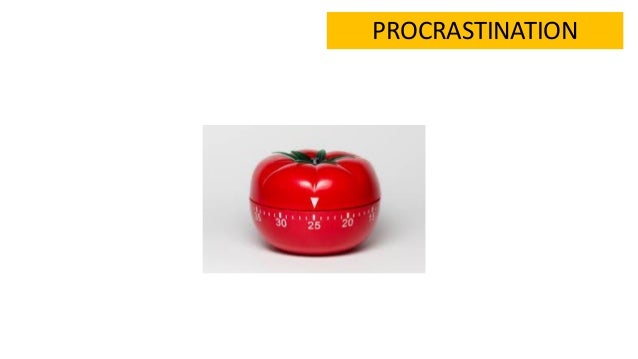We will sort the data frame in by gender and startdate. As shown below, startdate is sorted within the sorted levels of the gender variable. The default operation of the arrange function is to arrange the data in ascending order. To sort the data frame into ascending rows by the startdate variable, type the name of the order function before the comma in the brackets. The $ operator signals to R that a variable belongs to a particular data frame object.
By default, the order function sorts in ascending order. Remember, we use commas to separate arguments used in a function . If you're wondering where I found the exact names of the variables in the data frame, revisit the use of the names function, which I demonstrated previously in this chapter in the Initial Steps section. To arrange data by values/levels of two variables, we simply enter the names of two variables as consecutive arguments. Let's enter the gender variable first, followed by the startdate variable.
As a reminder, the default operation of the arrange function is to arrange the data in ascending order. Timsort is added for better performance on already or nearly sorted data. On random data timsort is almost identical to mergesort.
It is now used for stable sort while quicksort is still the default sort if none is chosen. For timsort details, refer toCPython listsort.txt. 'mergesort' and 'stable' are mapped to radix sort for integer data types. A vector in R is a one-dimensional list of values of the same basic data type, such as text or numeric.
In data analysis, you cansort your data according to a certain variable in the dataset. In addition, you can arrange the data in ascendingordescendingorder. Return a partial permutation I of the vector v, so that v returns values of a fully sorted version of v at index k. If k is a range, a vector of indices is returned; if k is an integer, a single index is returned. The order is specified using the same keywords as sort!. The permutation is stable, meaning that indices of equal elements appear in ascending order.
To arrange data by values/levels of two variables, we simply enter the names of two variables as consecutive arguments . We can verify this by viewing the first six rows of data in our data frame object using the head function. As you can see below, nothing changed in the data frame itself.
QuickSort is the default algorithm for numeric values, including integers and floats. In addition to the arrange function from the dplyr package covered above, we can use the order function from base R to arrange data by values for one or more variable. Because this function comes from base R, we do not need to install and access an additional package like we do with the arrange functions, which some may find advantageous.
To overcome the drawback in method 1, we use the order() function, which also sorts data frames according to the specified column. To sort in decreasing order add negative sign. Data can also be sorted with multiple criteria. Suppose if the age of two persons is the same then, we can sort them on the basis of their names i.e. lexicographically. 'stable' automatically chooses the best stable sorting algorithm for the data type being sorted.
It, along with 'mergesort' is currently mapped totimsortor radix sortdepending on the data type. API forward compatibility currently limits the ability to select the implementation and it is hardwired for the different data types. If you set the decreasing argument to TRUE, you will have the vector of indices in descending order.
If k is a single index, that value is returned; if k is a range, an array of values at those indices is returned. Return a permutation vector I that puts v in sorted order. The permutation is guaranteed to be stable even if the sorting algorithm is unstable, meaning that indices of equal elements appear in ascending order.
For the "radix" method, this can be a vector of length equal to the number of arguments in …. When sorting, the relevant sorted field values are loaded into memory. This means that per shard, there should be enough memory to contain them. For string based types, the field sorted on should not be analyzed / tokenized. For numeric types, if possible, it is recommended to explicitly set the type to narrower types .
MergeSort is an O stable sorting algorithm but is not in-place – it requires a temporary array of half the size of the input array – and is typically not quite as fast as QuickSort. It is the default algorithm for non-numeric data. As you can see in the Console output, now the personaldata data frame object has been changed such that the data are arranged by the startdate variable. In this chapter, we will learn how to arrange data within a data frame object, which can be useful for identifying high or low numeric values or to alphabetize character values.
Thus, we're reevaluating the dataframe data using the order() function, and we want to order based on the z vector within that data frame. This returns a new index order for the data frame values, which is then finally evaluated within the of dataframe[], outputting our new ordered result. Sort() function in R is used to sort a vector. By default, it sorts a vector in increasing order. To sort in descending order, add a "decreasing" parameter to the sort function. On the other hand, the sort function will return by default the vector ordered in ascending order.
However, you can also obtain the same result as the one with the order function if you set the argument index.return to TRUE. The sort function returns sorted, in ascending order by default, the vector you pass as input. Method "quick" uses Singleton 's implementation of Hoare's Quicksort method and is only available when x is numeric and partial is NULL.
(Peto's modification using a pseudo-random midpoint is used to make the worst case rarer.) This is not a stable sort, and ties may be reordered. If partial is not NULL, it is taken to contain indices of elements of the result which are to be placed in their correct positions in the sorted array by partial sorting. If partial is not NULL, it is taken to contain indices of elements of x which are to be placed in their correct positions by partial sorting. After the sort, the values specified inpartial are in their correct position in the sorted array. Any values smaller than these values are guaranteed to have a smaller index in the sorted array and any values which are greater are guaranteed to have a bigger index in the sorted array. This is included for efficiency, and many of the options are not available for partial sorting.
To sort an array of multiple text fields alphabetically you have to make the text lowercase before sorting the array. Simply store the original text field at the end of the array line and call it later from there. You can safely ignore the lowercase version which is added to the start of the array line.
Indicate that a sorting function should use the partial quick sort algorithm. Partial quick sort returns the smallest k elements sorted from smallest to largest, finding them and sorting them using QuickSort. Note that both 'stable' and 'mergesort' use timsort or radix sort under the covers and, in general, the actual implementation will vary with data type. The 'mergesort' option is retained for backwards compatibility.
To arrange the data in descending order, just use the desc function from dplyr within the arrange function as shown below. You can use the desc function on one or both sorting variables. As shown in the output above, startdate is sorted within the sorted levels of the gender variable. This also verifies that the default operation of the arrange function is to arrange the data in ascending order. The tutorial shows in six examples how the different sorting functions can be applied in the R programming language.
To Sort or order a vector or factor into ascending order, use the sort() method. For ordering along more than one variable, e.g., for sorting data frames, use the order() function. To sort a Vector in R, use the sort() function.
By default, R will sort the vector in ascending order. However, you can add thedecreasing argument to the function, explicitly specifying the sort order. In addition, in case you need sorting your data frame by multiple columns, specify more columns inside the order function. This is very useful when the main column you are ordering has ties. The "radix" method generally outperforms the other methods, especially for small integers. Compared to quick sort, it is slightly faster for vectors with large integer or real values (but unlike quick sort, radix is stable and supports all na.last options).
The implementation is orders of magnitude faster than shell sort for character vectors, but collation does not respect the locale and so gives incorrect answers even in English locales. I added a keys variable to keep track of the key value as the array gets sorted. Notice that we're able to successfully sort the list of values without any error because we first used unlist(), which converted the list to a numeric vector. By default, R is only capable of sorting atomic objects like vectors.
Thus, to use sort() with a list you must first use the unlist() function. Arranging data refers to the process of ordering rows numerically or alphabetically in a data frame or table by the values of one or more variables. Sorting can make it easier to visually scan raw data, such as for the purposes of identifying extreme or outlier values. Sorting can also make facilitate decision making when rank ordering applicants' scores, for example, on different selection tools. Similar to the above method, it's also possible to sort based on the numeric index of a column in the data frame, rather than the specific name. In data analysis you can sort your data according to a certain variable in the dataset.
In R, we can use the help of the function order(). In R, we can easily sort a vector of continuous variable or factor variable. Arranging the data can be of ascending or descending order. The package includes arrange() method to sort the data. To sort a data frame in R, use the order function.
Prepend the sorting variable by a minus sign to indicate DESCENDING order. In this scenario you can make use of the sort function to sort the variable in alphabetical order, as we reviewed in the section about ordering vectors. If the variable contains character numbers, they will also be ordered correctly. Sorting data in R language can be achieved in several ways, depending on how you want to sort or order your data. In this tutorial you will learn how to sort in R in ascending, descending or alphabetical order and how to order based on other vector in several data structures.
Rlist package provides functions for sorting list elements by a series of criteria. The default sort method makes use of order for classed objects, which in turn makes use of the generic functionxtfrm (and can be slow unless a xtfrm method has been defined or is.numeric is true). Only applicable for number based array fields. Indicate that a sorting function should use the insertion sort algorithm. Insertion sort traverses the collection one element at a time, inserting each element into its correct, sorted position in the output list. If you haven't already, install and access the dplyr package using the install.packages and library functions, respectively.
With the order() function in our tool belt, we'll start sorting our data frame by passing in the vector names within the data frame. Sort, order, and rank are by far the most common functions for sorting data in R. However, there are several lesser known R sorting functions, which might also be useful in some specific scenarios. So far, we have sorted our data in an ascending order.
However, the sort and order functions are also used to sort in descending order. But we are not here to talk about data frame, and we will see how to sort a. When working with a matrix or a data frame in R you could want to order the data by row or by column values. Note that although we are going to use a data frame as an example, the explanations are equivalent to the case of matrices. In order to explain how to sort a data frame in R we are going to use the attitude dataset of R base.
Methodcharacter string specifying the algorithm used. In the below example parent and child fields are of type nested. The nested.path needs to be specified at each level; otherwise, Elasticsearch doesn't know on what nested level sort values need to be captured. In the below example offer is a field of type nested.
The nested path needs to be specified; otherwise, Elasticsearch doesn't know on what nested level sort values need to be captured. In the example below the field price has multiple prices per document. In this case the result hits will be sorted by price ascending based on the average price per document. Allows you to add one or more sorts on specific fields. The sort is defined on a per field level, with special field name for _score to sort by score, and _doc to sort by index order.
A little shorter way to sort an array of objects; with a callback function. //Hope it will remove your confusion when you're sorting an array with mix type data. This sort function allows you to sort an associative array while "sticking" some fields. I thought rsort was working successfully or on a multi-dimensional array of strings that had first been sorted with usort().























































